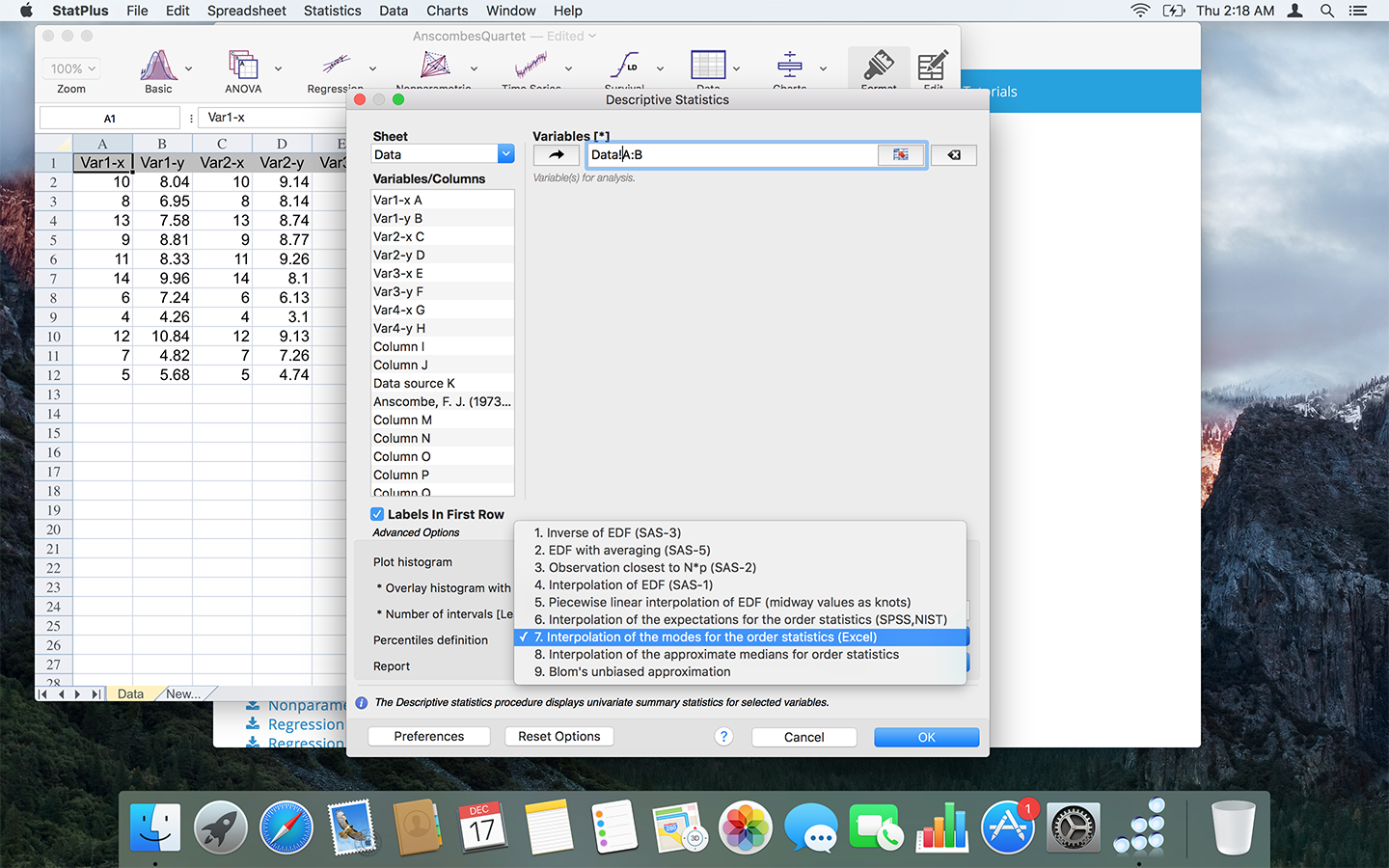

It assesses whether the population variances of our dependent variable are equal over the levels of our factors. Homogeneity tests refers to Levene’s test. We choose Univariate whenever we analyze just one dependent variable (weight loss), regardless how many independent variables (diet and exercise) we may have.īefore pasting the syntax, we'll quickly jump into the subdialogs, and for adjusting some settings.Įstimates of effect size will add partial eta squared in our output. On top of that, the normality assumption is of minor importance for larger sample sizes due to the central limit theorem. Our previous histogram suggests this holds for our data.

The situation in the (much larger) population may be different. However, we're looking at just a tiny sample.

We just saw that different diets and exercise levels show different mean weight losses. We'll explain it in a minute by visualizing our means in a chart. This is what we call an interaction effect. In a similar vein, we see a somewhat stronger main effect for exercise with means running from 2.3 up to 8.6 kilos.Īn interesting question is whether the effect of exercise depends on the diet followed. This is the main effect for diet: the differences in weight loss attributable to diet while taking together all exercise levels. The Atkins and vegetarian diets resulted in 6.3 and 4.3 kilos of weight loss on average. Note that participants without any diet -all exercise levels taken together- lost an average of 2.8 kilos. It may take a minute to see the pattern in this table but I did my best to highlight it with colors. *Inspect means for diet, exercise and diet by exercise. Next, we'd like to inspect the frequency distribution for weight loss with a histogram. We first want to confirm that we really do have 180 cases. We always want to have a basic idea what our data look like before jumping into any analyses. That is, we'll compare more than two means so we end up with some kind of ANOVA. We're going to test if the means for weight loss after two months are the same for diet, exercise level and each combination of a diet with an exercise level. These data -partly shown above- are in weightloss.sav. After two months, participants were asked how many kilos they had lost.
#How to run anova with spss on mac how to
How to lose weight effectively? Do diets really work and what about exercise? In order to find out, 180 participants were assigned to one of 3 diets and one of 3 exercise levels. Educational and Psychological Measurement, 42, 9-24.SPSS Two Way ANOVA – Basics Tutorial By Ruben Geert van den Berg under ANOVA Research Question Nonorthogonal analysis of variance: Putting the question before the answer. Design and analysis: A researcher's handbook. Protecting the overall rate of Type I errors for pairwise comparisons with an omnibus test statistic. The references I mention in the video are: This has important implications for factorial anovas, as I demonstrate through comparisons between the means reported in the descriptives table versus the means reported in the 'estimated marginal means' table. Also, this example is based on unbalanced design. I point out that the proper way to test the simple main effects for the interaction can only be achieved by adding a term to the syntax, as it can not be done through the menus. I then follow-up with some basic post-hoc tests. I test both main effects and the interaction effect. So, it's a 2 * 3 between subjects design. The example consists of 2 between subjects factors: one with 2 levels and one with 3 levels. I perform and interpret a two way ANOVA in SPSS.


 0 kommentar(er)
0 kommentar(er)
